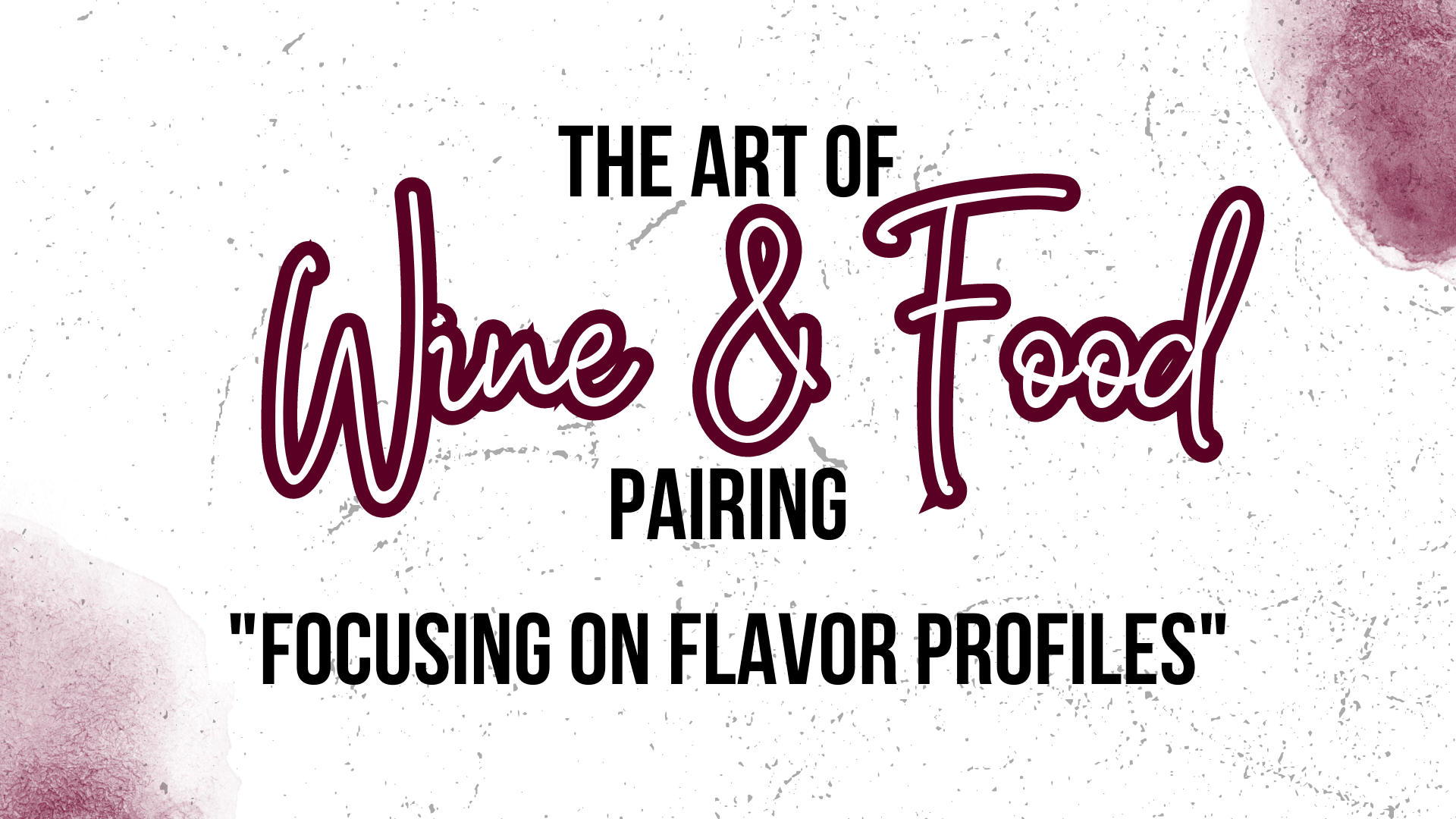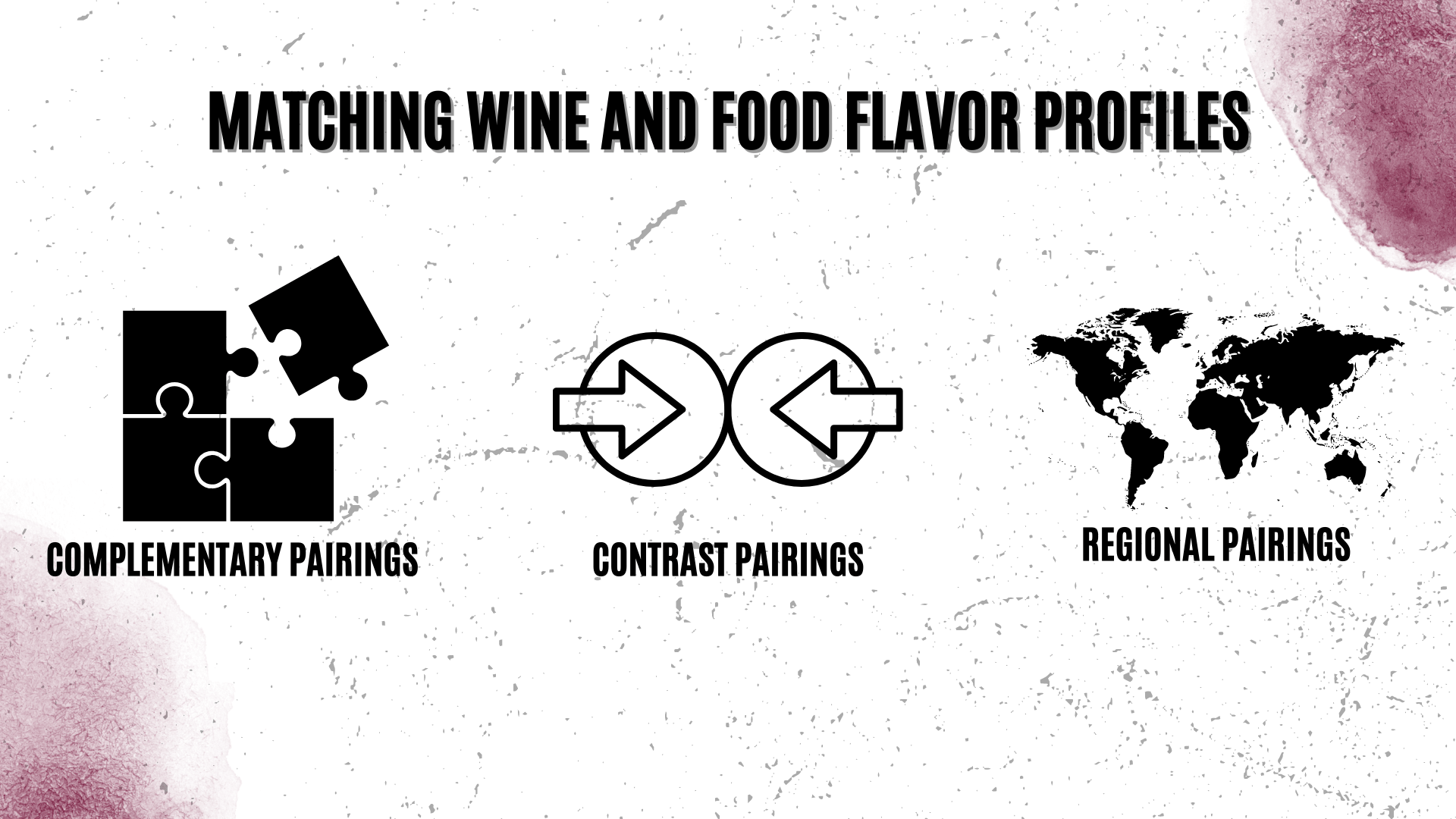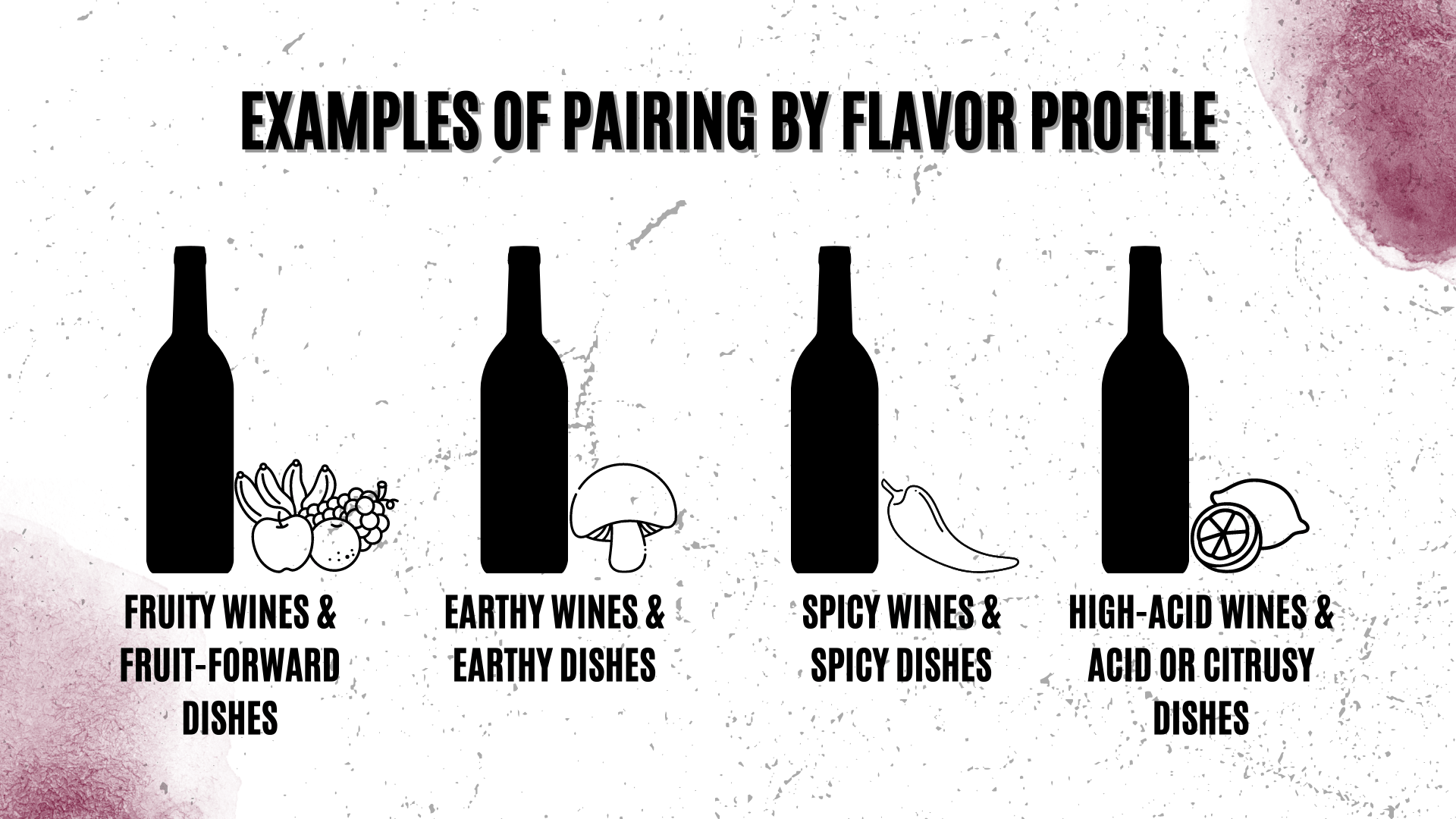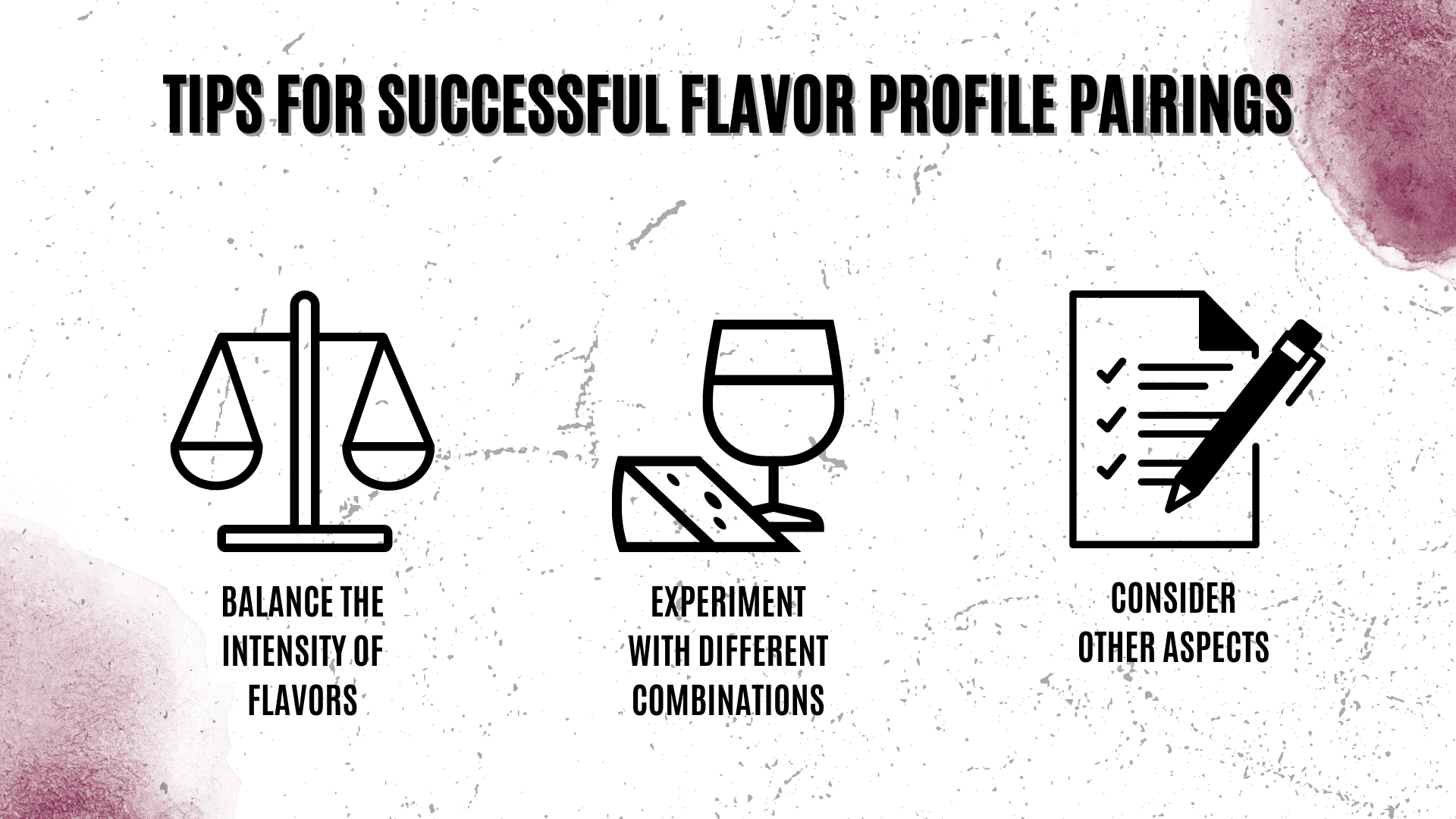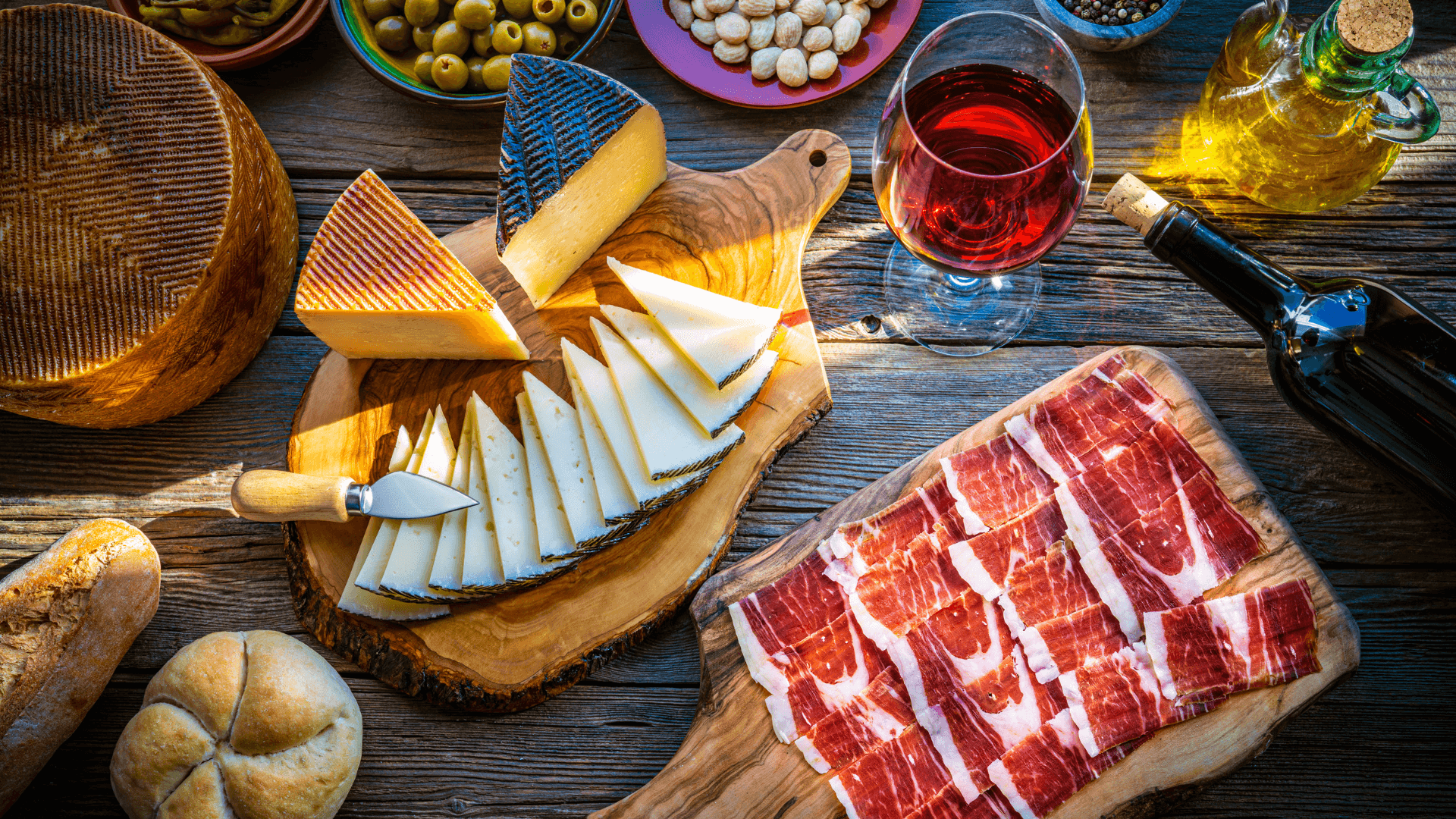Introduction
Pairing wine and food by flavor profile is an essential skill that can significantly elevate the dining experience. By understanding the different flavors present in both wine and food, you can create thoughtful pairings that enhance the enjoyment of both elements. In this comprehensive guide, we will explore the concept of flavor profiles, how to identify them in both wine and food, and how to successfully create pairings based on these profiles.
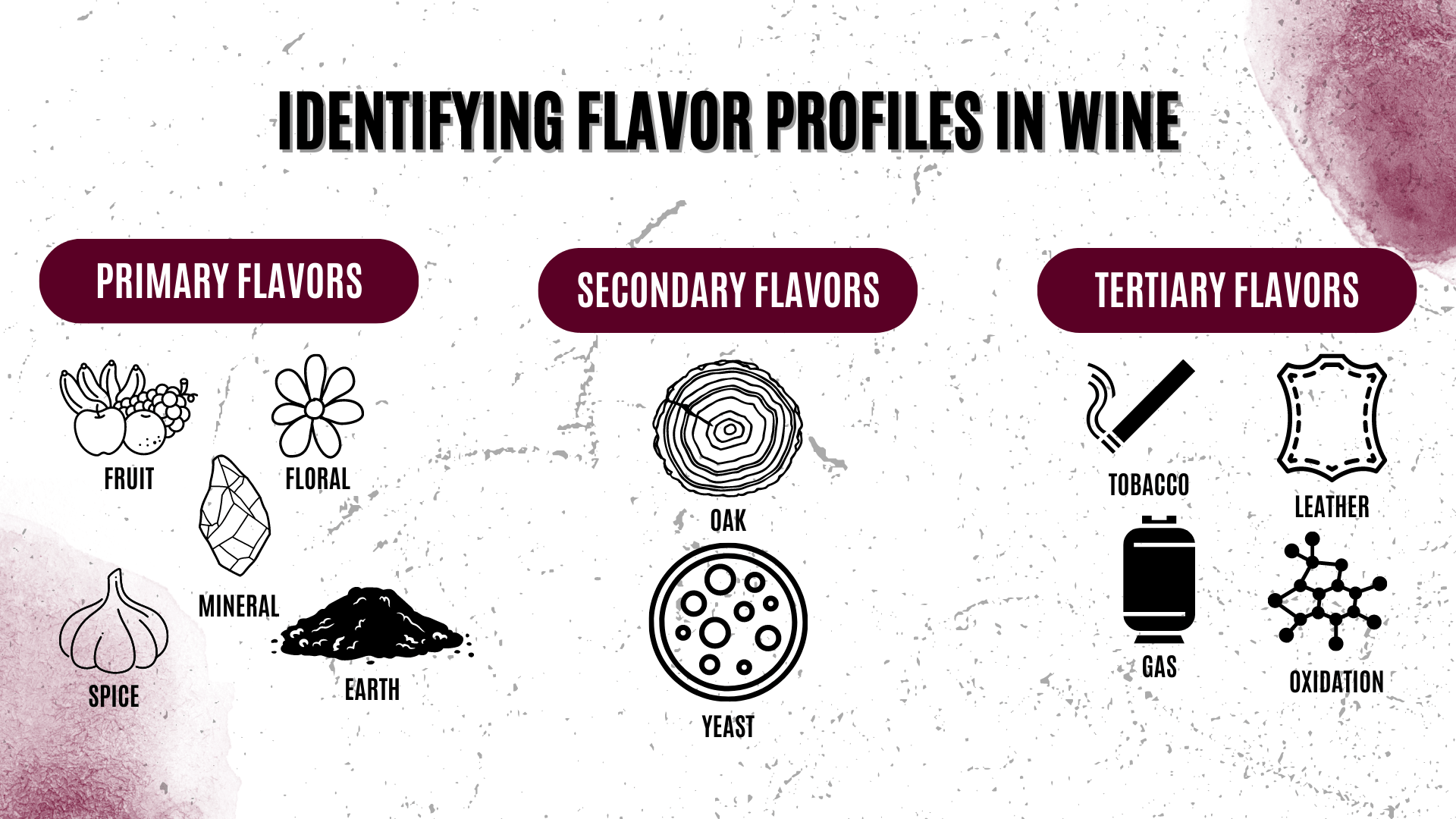
I. Identifying Flavor Profiles in Wine
Understanding the nuances of wine flavor profiles is essential to create successful wine and food pairings. These profiles can be divided into three categories: primary, secondary, and tertiary flavors. Recognizing these flavors in a wine can help you determine which dishes will complement the wine best.
A. Primary Flavors
- Fruit: Wines can exhibit a range of fruit flavors, from red berries in light-bodied reds to tropical fruits in some whites. The grape variety and terroir play a significant role in determining the fruit flavors present in the wine.
- Floral: Some wines, particularly whites like Viognier or Gewürztraminer, can have distinct floral notes, such as rose, honeysuckle, or orange blossom.
- Spice: Certain wines can exhibit spice flavors, such as cinnamon, clove, or black pepper, depending on the grape variety or growing conditions.
- Earth: Earthy flavors, such as forest floor, mushroom, or wet stone, can be found in wines with a strong connection to their terroir.
- Mineral: Some wines, particularly those from cooler climates, can have mineral flavors like slate or flint, which can add complexity to the wine.
B. Secondary Flavors
- Oak: The use of oak barrels in the winemaking process can impart flavors like toast, vanilla, and butter to the wine. These secondary flavors can complement or contrast with the primary flavors, adding depth and complexity.
- Yeast: In some wines, particularly those aged on lees (dead yeast cells), flavors like bread dough, brioche, or biscuit can develop, creating a unique flavor profile.
C. Tertiary Flavors
- Aging: As wine ages, its flavors can evolve, and tertiary flavors can emerge. These can include dried fruit, nuts, tobacco, leather, and even petrol in some aged Rieslings.
- Oxidation: The slow exposure to oxygen during the aging process can also contribute to the development of tertiary flavors, altering the wine’s original flavor profile.
II. Identifying Flavor Profiles in Food
Much like wine, food possesses distinct flavor profiles that significantly influence the success of wine pairings. These profiles can be shaped by factors such as the ingredients used, the cooking technique employed, and the interplay of flavors. Understanding the flavor profiles of food can help you create perfect pairings that enhance the overall dining experience.
A. Primary Flavors in Food
- Sweet: Sweetness can come from ingredients like sugar, honey, or fruits. Desserts are the most common sweet dishes, but many savory dishes also contain sweet components.
- Salty: Salt is a crucial seasoning that adds flavor to many dishes, ranging from appetizers to main courses. Salty foods can include cured meats, cheeses, and seafood.
- Bitter: Bitterness can be found in ingredients like dark chocolate, coffee, and some leafy greens, such as kale or arugula. Bitter flavors can add depth and balance to a dish.
- Sour: Acidic or sour flavors can come from ingredients like citrus fruits, vinegar, or fermented foods. These flavors can brighten a dish and provide contrast to other tastes.
- Umami: Umami is a savory taste often associated with ingredients like mushrooms, tomatoes, soy sauce, and aged cheeses. It can add richness and depth to a dish.
B. Flavor Combinations
- Combining different primary flavors can create unique and complex taste experiences. For example, sweet and salty flavors can be found in dishes like salted caramel or prosciutto-wrapped melon, while sour and bitter flavors can coexist in pickled vegetables or citrus-based salads.
C. Cooking Techniques and Their Impact on Flavor Profiles
- Grilling: Grilling imparts a smoky, charred flavor to ingredients, adding depth and complexity. Grilled foods can pair well with wines that have similar smoky notes or robust flavors to stand up to the bold taste.
- Frying: Frying can create a crispy texture and rich flavor in dishes. Fried foods often pair well with wines that have high acidity, which can cut through the richness of the dish and refresh the palate.
- Braising: Braising is a slow-cooking method that tenderizes ingredients and develops deep, complex flavors. Braised dishes can pair well with full-bodied wines that have enough structure and intensity to complement the rich flavors.
III. Matching Wine and Food Flavor Profiles
Creating harmonious wine and food pairings can be achieved by focusing on complementary or contrasting flavor profiles or by exploring regional pairings. Understanding these methods can help you enhance your dining experience and create unforgettable combinations.
A. Complementary Pairings
- Complementary pairings involve selecting wines and dishes with similar flavors, creating a harmonious taste experience. For example, pairing a fruity wine with a fruit-forward dish, such as a peach-glazed pork dish with a peachy Viognier, can emphasize the shared flavors and create a cohesive pairing.
- Another example of a complementary pairing could be matching an earthy Pinot Noir with a dish featuring mushrooms or truffles, as the earthy flavors in both components work together to create a unified taste experience.
B. Contrasting Pairings
- Contrasting pairings use opposite or contrasting flavors to create balance and enhance the overall taste experience. For instance, a high-acid wine, like a Sauvignon Blanc, can effectively cut through the richness of a fatty dish, like a creamy pasta or buttery seafood, and cleanse the palate between bites.
- Another example of a contrasting pairing is matching a sweet wine, like a Sauternes, with a salty blue cheese, where the sweetness of the wine counteracts the saltiness of the cheese, creating a delightful and well-rounded taste experience.
C. Regional Pairings
- Regional pairings capitalize on the characteristic flavors of a specific region or cuisine, taking advantage of the natural synergy between local food and wine. For example, pairing a robust Tuscan red wine, like a Chianti, with a traditional Italian pasta dish featuring a rich tomato sauce can enhance the flavors of both components, as the wine’s acidity complements the acidity in the tomatoes.
- Another regional pairing example could be matching a crisp, citrusy Albariño from Spain’s Rías Baixas region with a plate of fresh seafood or tapas, as the wine’s bright acidity and fruit flavors work well with the region’s characteristic coastal dishes.
IV. Examples of Pairing by Flavor Profile
Creating successful pairings based on flavor profiles can enhance the dining experience and bring out the best in both the wine and the dish. Here are some examples of well-executed pairings that focus on complementary or contrasting flavor profiles:
A. Fruity Wines and Fruit-Forward Dishes
Pair a bright and fruity Beaujolais with a fresh berry salad or a pork dish featuring a fruit-based sauce, such as cherry or apple. The fruity flavors in both the wine and the dish complement each other, creating a harmonious and delightful taste experience.
B. Earthy Wines and Earthy Dishes
Match an earthy Pinot Noir with a wild mushroom risotto or a dish featuring truffles. The earthy flavors in both the wine and the dish work together to create a well-rounded and cohesive pairing that emphasizes the shared characteristics.
C. Spicy Wines and Spicy Dishes
Complement a bold and spicy Zinfandel with a black pepper-crusted steak or a dish featuring spicy flavors, like a curry or a dish with chipotle peppers. The spiciness in both the wine and the dish can create an exciting and dynamic taste experience that showcases the bold flavors.
D. High-Acid Wines and Acidic or Citrusy Dishes
Pair a crisp Sauvignon Blanc with an acidic or citrusy dish, like ceviche or a salad with a tangy vinaigrette. The high acidity in the wine can balance and enhance the acidity in the dish, providing a refreshing and palate-cleansing effect that allows the flavors to shine.
V. Tips for Successful Flavor Profile Pairings
To create successful wine and food pairings that focus on flavor profiles, it’s essential to consider various factors that can influence the overall taste experience. Keep these tips in mind when exploring different combinations:
A. Balance the Intensity of Flavors
Be mindful of the intensity of flavors in both the wine and the dish to avoid overpowering one or the other. Ideally, the wine and the food should complement each other without one dominating the other. This balance can help create a harmonious pairing that highlights the best qualities of both components.
B. Experiment with Different Combinations
There is no one-size-fits-all approach to wine and food pairing, so don’t be afraid to experiment with different flavor profiles and combinations to discover your personal preferences. Keep an open mind and be willing to try new and unconventional pairings that may pleasantly surprise you.
C. Consider Other Aspects of the Wine
While focusing on flavor profiles is essential, don’t forget to consider other aspects of the wine, such as body, tannins, and acidity, when creating pairings. These elements can also play a crucial role in determining the success of a pairing and should be taken into account when making your selection.
D. Break Traditional Pairing Rules
Wine and food pairing rules can serve as helpful guidelines, but they shouldn’t be followed blindly. Don’t be afraid to break traditional pairing rules and try unconventional matches that may defy conventional wisdom. This approach can lead to unexpected and delightful pairings that showcase the versatility and complexity of both wine and food.
Conclusion
Understanding and utilizing flavor profiles in wine and food pairing can greatly enhance the dining experience. By being aware of the different flavors present in both elements and knowing how to match them effectively, you can create harmonious pairings that elevate the flavors of both the wine and the dish. Experimentation is key, so don’t be afraid to step out of your comfort zone and try new combinations. With a little practice and a keen sense of taste, you’ll be able to master the art of pairing by flavor profile and delight your guests with exquisite wine and food pairings.
Frequently Asked Questions
Pairing by flavor profile refers to the process of matching the flavors of a wine with the flavors of a particular dish, with the goal of creating a harmonious and balanced dining experience. This approach considers the individual characteristics of both the wine and the food, such as acidity, sweetness, fruitiness, and earthiness, among others.
Considering the flavor profile of both wine and food is essential for creating successful pairings because it ensures that the flavors of each element complement and enhance one another. A well-chosen pairing can elevate the overall dining experience, bringing out the best in both the wine and the dish.
To determine the flavor profile of a wine, pay attention to the aroma, taste, and finish of the wine. Look for dominant flavors and characteristics, such as fruitiness, acidity, sweetness, or earthiness. For dishes, consider the main ingredients and how they are prepared, as well as any dominant flavors, such as spiciness, saltiness, or sweetness.
Both contrasting and complementary flavor profiles can work well in pairings. The key is to find a balance between the wine and the dish, ensuring that neither element overpowers the other. Experiment with different combinations to discover which pairings work best for your palate.
While there are no strict rules for pairing by flavor profile, some general guidelines can help guide your choices. For example, pairing wines and dishes with similar flavors often results in a harmonious pairing, while contrasting flavors can create an interesting and dynamic experience. Ultimately, the best pairings come down to personal preference and experimentation.
To improve your ability to pair by flavor profile, practice is key. Taste a variety of wines and dishes to familiarize yourself with their unique characteristics, and try creating pairings based on your observations. Additionally, you can attend wine tastings or take a wine appreciation course to gain a deeper understanding of wine flavor profiles and pairing techniques.


